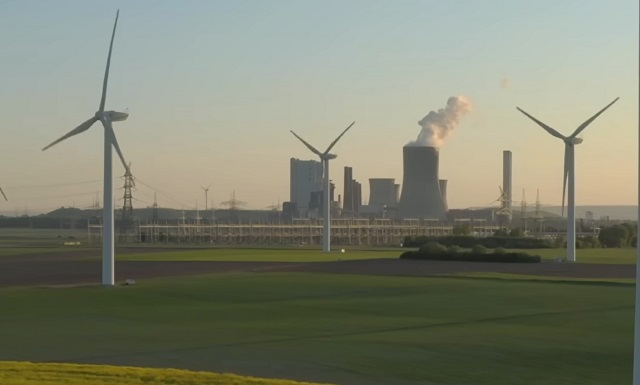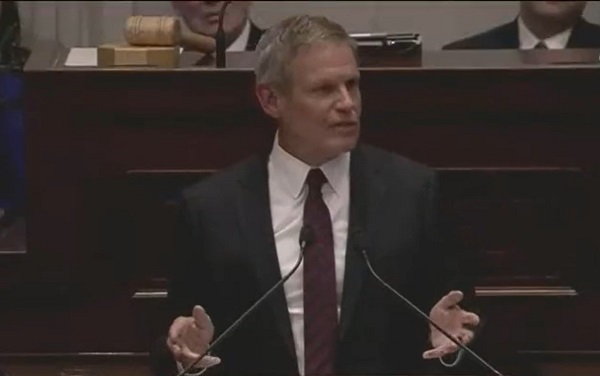Alberta
Watch: Provincial Review Panel tees off on Supervised Consumption Sites

From The Province of Alberta
Impact of supervised consumption sites report released
The final report of the expert-led Supervised Consumption Services Review Committee is now available online.
The Supervised Consumption Services Review Committee listened to more than 19,000 Albertans’ concerns about the impacts supervised consumption services (SCS) sites are having on their homes, businesses and neighbourhoods.
The final report contains the committee’s findings regarding needle debris, social disorder, public safety and other concerns. The committee found serious problems with supervised consumption services as they are currently being operated, and provided thoughtful considerations for improving services and community safety, while building a comprehensive recovery-oriented system of care that offers the greatest chance to lift vulnerable Albertans with addiction out of their current plight.
“This report is a wake-up call for Alberta. Every one of us deserves to feel safe in our communities, and every Albertan struggling with addiction should be able to access the supports they need. We will consider this report, and all other relevant evidence, as we develop a comprehensive, long-term approach that works. That means improving addiction treatment services and supports to create a full continuum of care across the province.”
“Crime grows in areas where illegal drug use is on the rise. Our government supports a firm justice system that includes investigating, disrupting and dismantling the organized crime groups that supply and sell illegal drugs that fuel addiction, ruin people’s lives and take a terrible toll on our communities. We’ll continue to ensure law enforcement and the justice system have the tools and resources to protect community safety.
“Thank you to all Albertans who participated in this process. Our committee was given a mandate to hear from people across the province on all sides of this important issue. The findings in this report demonstrate the compassion many Albertans feel for their neighbours and their commitment to creating safe, welcoming communities for everyone.”
“Our committee heard from thousands of passionate Albertans, and reviewed a wide range of data and evidence sources to examine what impact these services are having on the communities around them. The findings may be difficult for some to hear, but are vital to improving the health and well-being of those who use the sites and those who live in surrounding neighbourhoods.”
Key findings from the report include:
- Increased needle debris and deteriorating public safety around the sites were significant concerns raised during the town halls, through the surveys and in stakeholder meetings.
- While there were no deaths recorded among people at the SCS sites, death rates in the immediate vicinity of the sites after the sites opened continued to increase along with province-wide rates of opioid deaths.
- Opioid-related calls for emergency medical services also increased in the immediate vicinity following the opening of the sites.
- Many people indicated they felt less safe in the areas surrounding the SCS sites after they opened.
- Lack of focus on referrals to detoxification and treatment resources.
- Inconsistent and often inaccurate classification of “overdose reversals.”
- Substantial increases in the use of non-opioid substance use, specifically methamphetamines, leading to aggressive behaviour endangering public safety.
Over the coming months, the government will consider changes to supervised consumption services and other addiction treatment and recovery resources, on a city-by-city basis.
Quick facts
- The eight-member committee included First Nations people, experts in addiction and recovery, harm reduction, mental health, trauma, pain management, law enforcement, crime reduction and justice, as well as people with lived experience.
- 16,831 individuals and 440 businesses submitted feedback to the committee through an online survey.
- About 1,800 people attended the town halls in Edmonton, Red Deer, Calgary, Lethbridge, Medicine Hat and Grande Prairie.
- More than 500 first responders and more than 50 stakeholder groups provided evidence and shared concerns with the committee.
Alberta
Game changer: Trans Mountain pipeline expansion complete and starting to flow Canada’s oil to the world

Workers complete the “golden weld” of the Trans Mountain pipeline expansion on April 11, 2024 in the Fraser Valley between Hope and Chilliwack, B.C. The project saw mechanical completion on April 30, 2024. Photo courtesy Trans Mountain Corporation
From the Canadian Energy Centre
By Will Gibson
‘We’re going to be moving into a market where buyers are going to be competing to buy Canadian oil’
It is a game changer for Canada that will have ripple effects around the world.
The Trans Mountain pipeline expansion is now complete. And for the first time, global customers can access large volumes of Canadian oil, with the benefits flowing to Canada’s economy and Indigenous communities.
“We’re going to be moving into a market where buyers are going to be competing to buy Canadian oil,” BMO Capital Markets director Randy Ollenberger said recently, adding this is expected to result in a better price for Canadian oil relative to other global benchmarks.
The long-awaited expansion nearly triples capacity on the Trans Mountain system from Edmonton to the West Coast to approximately 890,000 barrels per day. Customers for the first shipments include refiners in China, California and India, according to media reports.
Shippers include all six members of the Pathways Alliance, a group of companies representing 95 per cent of oil sands production that together plan to reduce emissions from operations by 22 megatonnes by 2030 on the way to net zero by 2050.
The first tanker shipment from Trans Mountain’s expanded Westridge Marine Terminal is expected later in May.
 Photo courtesy Trans Mountain Corporation
Photo courtesy Trans Mountain Corporation
The new capacity on the Trans Mountain system comes as demand for Canadian oil from markets outside the United States is on the rise.
According to the Canada Energy Regulator, exports to destinations beyond the U.S. have averaged a record 267,000 barrels per day so far this year, up from about 130,000 barrels per day in 2020 and 33,000 barrels per day in 2017.
“Oil demand globally continues to go up,” said Phil Skolnick, New York-based oil market analyst with Eight Capital.
“Both India and China are looking to add millions of barrels a day of refining capacity through 2030.”
In India, refining demand will increase mainly for so-called medium and heavy oil like what is produced in Canada, he said.
“That’s where TMX is the opportunity for Canada, because that’s the route to get to India.”
Led by India and China, oil demand in the Asia-Pacific region is projected to increase from 36 million barrels per day in 2022 to 52 million barrels per day in 2050, according to the U.S. Energy Information Administration.
More oil coming from Canada will shake up markets for similar world oil streams including from Russia, Ecuador, and Iraq, according to analysts with Rystad Energy and Argus Media.
Expanded exports are expected to improve pricing for Canadian heavy oil, which “have been depressed for many years” in part due to pipeline shortages, according to TD Economics.
 Photo courtesy Trans Mountain Corporation
Photo courtesy Trans Mountain Corporation
In recent years, the price for oil benchmark Western Canadian Select (WCS) has hovered between $18-$20 lower than West Texas Intermediate (WTI) “to reflect these hurdles,” analyst Marc Ercolao wrote in March.
“That spread should narrow as a result of the Trans Mountain completion,” he wrote.
“Looking forward, WCS prices could conservatively close the spread by $3–4/barrel later this year, which will incentivize production and support industry profitability.”
Canada’s Parliamentary Budget Office has said that an increase of US$5 per barrel for Canadian heavy oil would add $6 billion to Canada’s economy over the course of one year.
The Trans Mountain Expansion will leave a lasting economic legacy, according to an impact assessment conducted by Ernst & Young in March 2023.
In addition to $4.9 billion in contracts with Indigenous businesses during construction, the project leaves behind more than $650 million in benefit agreements and $1.2 billion in skills training with Indigenous communities.
Ernst & Young found that between 2024 and 2043, the expanded Trans Mountain system will pay $3.7 billion in wages, generate $9.2 billion in GDP, and pay $2.8 billion in government taxes.
Alberta
Alberta government should eliminate corporate welfare to generate benefits for Albertans

From the Fraser Institute
By Spencer Gudewill and Tegan Hill
Last November, Premier Danielle Smith announced that her government will give up to $1.8 billion in subsidies to Dow Chemicals, which plans to expand a petrochemical project northeast of Edmonton. In other words, $1.8 billion in corporate welfare.
And this is just one example of corporate welfare paid for by Albertans.
According to a recent study published by the Fraser Institute, from 2007 to 2021, the latest year of available data, the Alberta government spent $31.0 billion (inflation-adjusted) on subsidies (a.k.a. corporate welfare) to select firms and businesses, purportedly to help Albertans. And this number excludes other forms of government handouts such as loan guarantees, direct investment and regulatory or tax privileges for particular firms and industries. So the total cost of corporate welfare in Alberta is likely much higher.
Why should Albertans care?
First off, there’s little evidence that corporate welfare generates widespread economic growth or jobs. In fact, evidence suggests the contrary—that subsidies result in a net loss to the economy by shifting resources to less productive sectors or locations (what economists call the “substitution effect”) and/or by keeping businesses alive that are otherwise economically unviable (i.e. “zombie companies”). This misallocation of resources leads to a less efficient, less productive and less prosperous Alberta.
And there are other costs to corporate welfare.
For example, between 2007 and 2019 (the latest year of pre-COVID data), every year on average the Alberta government spent 35 cents (out of every dollar of business income tax revenue it collected) on corporate welfare. Given that workers bear the burden of more than half of any business income tax indirectly through lower wages, if the government reduced business income taxes rather than spend money on corporate welfare, workers could benefit.
Moreover, Premier Smith failed in last month’s provincial budget to provide promised personal income tax relief and create a lower tax bracket for incomes below $60,000 to provide $760 in annual savings for Albertans (on average). But in 2019, after adjusting for inflation, the Alberta government spent $2.4 billion on corporate welfare—equivalent to $1,034 per tax filer. Clearly, instead of subsidizing select businesses, the Smith government could have kept its promise to lower personal income taxes.
Finally, there’s the Heritage Fund, which the Alberta government created almost 50 years ago to save a share of the province’s resource wealth for the future.
In her 2024 budget, Premier Smith earmarked $2.0 billion for the Heritage Fund this fiscal year—almost the exact amount spent on corporate welfare each year (on average) between 2007 and 2019. Put another way, the Alberta government could save twice as much in the Heritage Fund in 2024/25 if it ended corporate welfare, which would help Premier Smith keep her promise to build up the Heritage Fund to between $250 billion and $400 billion by 2050.
By eliminating corporate welfare, the Smith government can create fiscal room to reduce personal and business income taxes, or save more in the Heritage Fund. Any of these options will benefit Albertans far more than wasteful billion-dollar subsidies to favoured firms.
Authors:
-

 Alberta14 hours ago
Alberta14 hours agoGame changer: Trans Mountain pipeline expansion complete and starting to flow Canada’s oil to the world
-

 Brownstone Institute1 day ago
Brownstone Institute1 day agoBook Burning Goes Digital
-

 Addictions13 hours ago
Addictions13 hours agoCanada’s ‘safer supply’ patients are receiving staggering amounts of narcotics
-

 conflict2 days ago
conflict2 days agoOver 200 Days Into War, Family Of American Hostage in Gaza Strives For Deal To Bring Son Home
-

 Brownstone Institute22 hours ago
Brownstone Institute22 hours agoThe Predictable Wastes of Covid Relief
-

 conflict9 hours ago
conflict9 hours agoImmigration Experts Warn Possible Biden Plan To Import Gazan Refugees Would Be ‘National Security Disaster’
-

 Bruce Dowbiggin10 hours ago
Bruce Dowbiggin10 hours agoDo It Once, Shame On You; Do It Twice, Shame On Me
-

 illegal immigration4 hours ago
illegal immigration4 hours agoPanama Elects President Vowing Shutdown Of Key Routes To US Used By Over Half A Million Migrants









